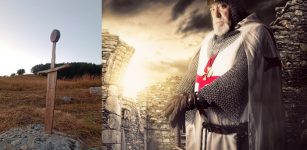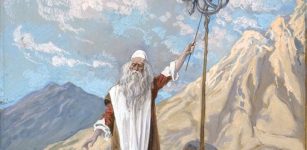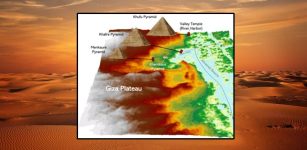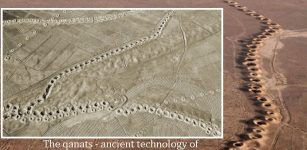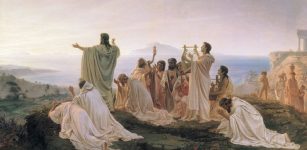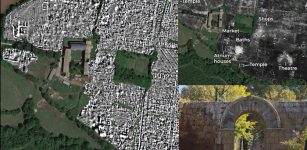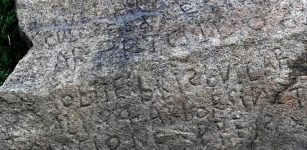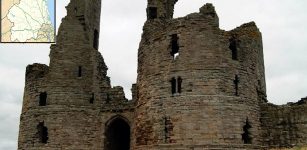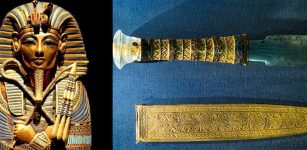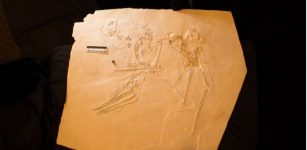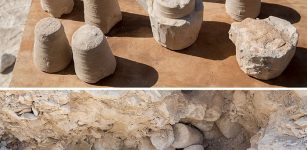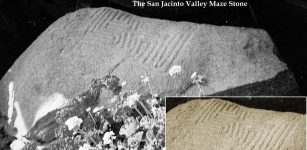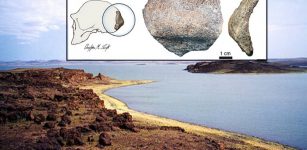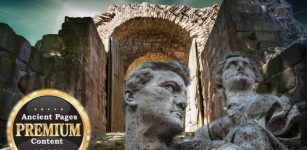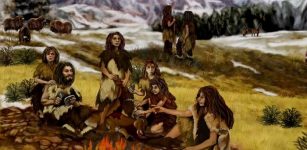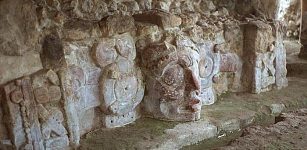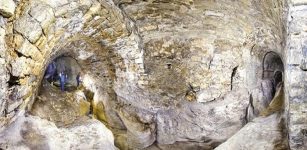Mysterious Bronze Age Face Carved In Rock And Rare Artifacts Found In Kazakhstan
Jan Bartek - AncientPages.com - A remarkable archaeological discovery has been made in Kazakhstan. During a routine inspection as part of the preventive Orman campaign in the Sandyktau district, Department of Emergency Situations staff stumbled upon a mysterious stone carving depicting a human face.
Sergey Yarygin, a leading scientist from the Alkey Margulan Institute, noted that similar carvings have been found in Bronze Age sites across Central Asia and Eastern Europe. He also pointed out the presence of analogous images in the early Iron Age in southern Siberia and medieval Turkic cultures that spread across the Eurasian steppes. Despite these parallels, Yarygin emphasized that the exact period of the artifact remains uncertain, as it could belong to various historical epochs, including more recent times.
Who was the individual whose face carved in rock has now been found in Kazakhstan? Photo credit: Akmola Region’s Department of Emergency Situations.
The discovery has generated considerable interest both locally and internationally. The artifact is now under the protection of the local heritage authorities and has been reported to the regional Department of Emergency Situations and the local history museum. This finding will draw more scholarly attention and may prompt further archaeological investigations.
The number of archaeological finds in Kazakhstan is increasing regularly.
The archaeological expedition conducted by the Pavlodar Pedagogical University in the Pavlodar Region has yielded significant findings at the Koktas complex. Of particular note is the discovery of a bronze spearhead, attributed to the Sargarin-Alexeyev culture and dated to the mid-13th to 8th centuries BCE. This artifact, unearthed by second-year student Asylbek Yelaman, is considered a unique discovery for the region.
Photo credit: gov.kz.
According to Asian Times, the excavation also revealed fragments of pottery kitchen utensils adorned with various decorative patterns. These patterns include designs created using fingernails and comb-pattern motifs incorporating triangular shapes and straight lines. While reminiscent of patterns found in Novosibirsk, the closely spaced arrangement of the designs at Koktas suggests a distinct local style.
The Koktas site encompasses over 20 burial mounds, some dating back to the Saka period. Excavations have uncovered numerous human and animal remains, as well as fragments of ceramic kitchenware and bronze arrowheads. Notably, an earring characteristic of the Saka period was discovered at 30 centimeters in one of the burial pits, providing a basis for dating the burial. The orientation of the interred individual, from west to east, was also determined.
Archaeological excavations in Kazakhstan. Photo credit: Ministry of Culture and Information.
Furthermore, the site has yielded evidence of ancient buildings and mines for extracting and processing copper ore, dating back approximately 3,500 years. These findings provide valuable insights into early metallurgical activities in the region.
At present, all uncovered artifacts are undergoing necessary laboratory processing for further analysis and preservation.
See also: More Archaeology News
Archaeologists are also excavating the Taldy-1 necropolis, a Bronze Age site in Kazakhstan's Karagandy Region. The site features a large rectangular enclosure with ten burial chambers, suggesting a mass burial event. Researchers found horse bones, pottery fragments, and artifacts, including bronze jewelry and bone arrowheads.
The site is attributed to the Alakul culture, dating to the 17th-16th centuries BCE. The burial practices indicate a possible societal shift during a peaceful period, with increased prominence of women and religious figures.
Written by Jan Bartek - AncientPages.com Staff Writer




